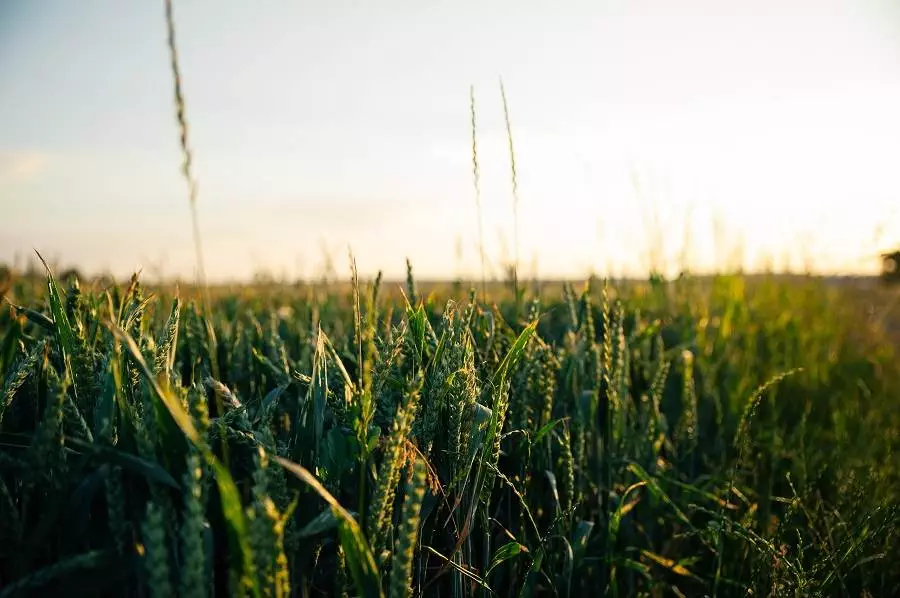Genetic Modification of crops?
The inserting of DNA into the genome of an organism is called Genetic Modification or GM. New DNA is transferred into the crop cells to produce genetically modified crops. They develop into plants by growing the cells as tissue culture. New DNA will inherit from the seeds produced by the plants. The genetic makeup and its interaction with the environment determined the characteristics of all living organisms. All plants and animals are made of DNA in which the main genetic makeup of an organism is the genome. To make proteins its need the genome contains gene in the region of DNA. It is those proteins that give the plant its characteristic. For example, the color of flowers is determined by genes that carry the instructions for making proteins involved in producing the pigments the color petals. The specific stretch of DNA into the plant’s genome is made by the genetic modification of plants, which gives it a new or different characteristic. The growth of plants or for making it resistant to a particular disease genetic modification can play an important role.

Direct Effects of a GM Crop on the Environment
- Use of plant protection products
- The honey bee
- Yield per surface unit
- Pollen mediated gene flow(vertical gene transfer)
- Horizontal gene transfer
- Invasiveness
Indirect Effects of a GM Crop on the Environment
- Transition to no-till farming
- Glyphosate tolerant crops
- Resistance to herbicides
- Resistance to Bt
- Indirect additional plant protection
- Secondary pest problem
Damage of GM crops to the environment
Generally, GM crops do not damage the environment. Several farming practices like overuse of herbicides causing the eradication of plants from agricultural land have been shown harm to the environment. In the UK between 1999 and 2006, it was found that when weed control is particularly effective, insect biodiversity is reduced; when a large amount of herbicides tolerant GM crops is conducted. It is happened not because of GM crops, the important reasons are the amount of weed present in the crop. Agricultural land aside from the biodiversity area can reduce the damage to wildlife. Overuse of the herbicides reduces the growth of weed which is a related issue for growing crops. The problem caused by herbicides tolerant crops because of the repeating growth of similar herbicide-tolerant crops which involves repeating the use of similar herbicides. The solution to reducing the overuse of herbicides problem is to the rotation of crops or rotation of herbicides in the different crop fields. To reduce insects from crop field GM crops introducing with the gene of Bt toxin has environmental benefits. For example, Cotton farmers are benefitted by GM insect-resistant cotton. Successive GM crops can give high yield production. However, resistant weed, insect pests can be developed by GM technology like herbicides. There are enormous numbers of variables that determine the impact on the environment. Such as the method of cultivation depends on yield capacity, productivity, disease resistance, etc. GM crops also have health effects on human and animal life. The scope of environmental risk assessment and strict regulation ensures that the only GM crops which brought onto the market have no negative impact on the environment.
Environmental benefits of Genetically Modified Crops
The benefits of GM crops on the environment are given below:-
- Reduces the use of pesticides spraying
- Reduces the amount of greenhouse gas
- Reduces the number of chemical pesticides
- Optimize the number of herbicides and insecticides
- Reduces the effect of pesticides poisoning
- Give better tillage for cultivation
- Have a negative effect on insect abundance and diversity
References
- https://royalsociety.org/topics-policy/projects/gm-plants/what-is-gm-and-how-is-it-done/
- http://fundacion-antama.org/wp-content/uploads/2016/09/vib_fact_genetisch-gewijzigde- gewassen_ENG_2016_LR.pdf
- https://royalsociety.org/topics-policy/projects/gm-plants/have-gm-crops-caused-damage-to-the-environment/#:~:text=Crops%20do%20not%20damage%20the,shown%20to%20harm%20the%20environment.
- https://www.isaaa.org/resources/publications/pocketk/4/default.asp
Author:
Md. Saiful Islam Chowdhury
Soil and Environmental Sciences
The University of Barishal. Bangladesh